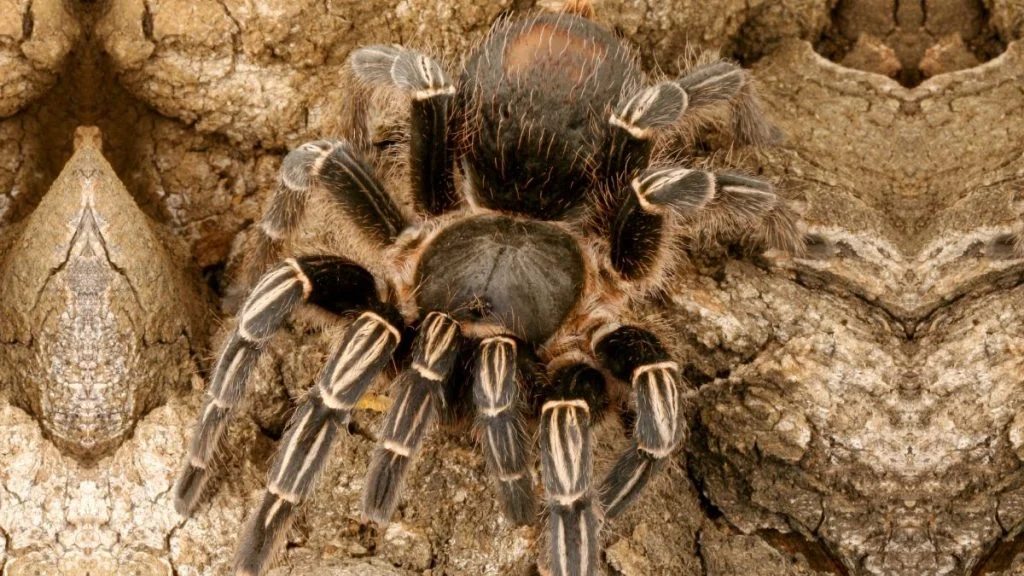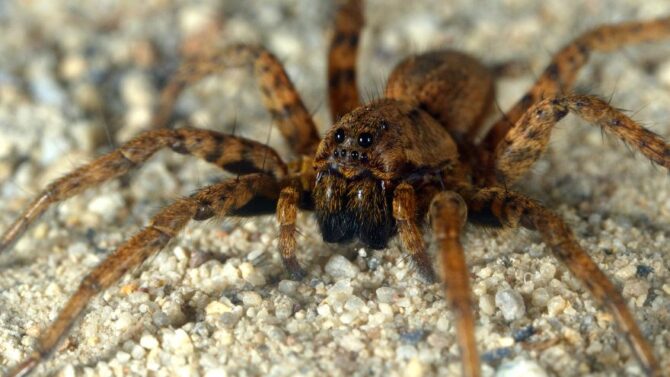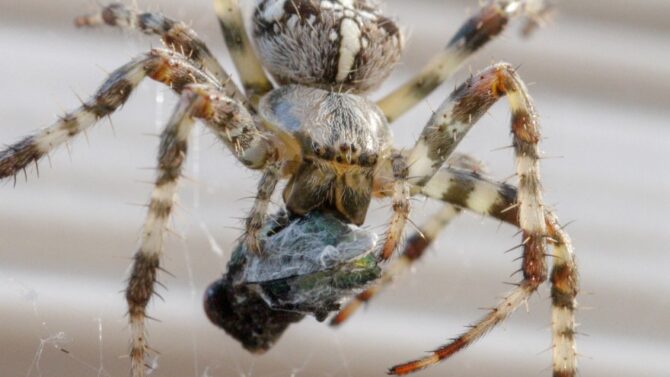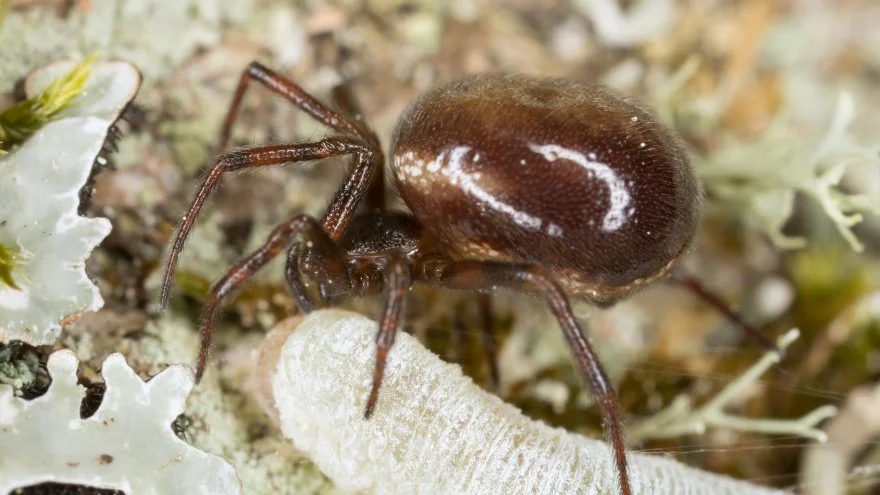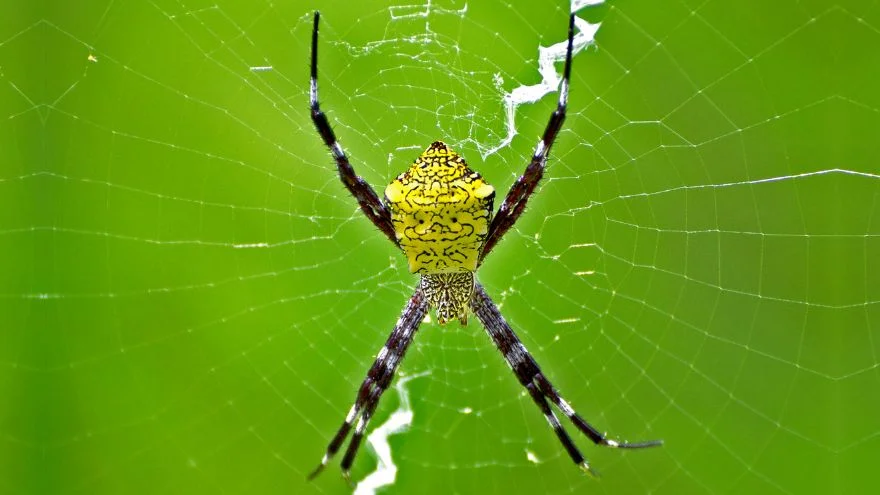The skeleton tarantula is one out of the over 800 different tarantula species. With this high number, it is difficult to know exactly what it takes to care for any of them.
If the skeleton tarantula is your pet choice and you want to know how to care for it, this is the right article for you.
Caring for a skeleton tarantula involves giving it the right place to live and good food that helps it grow. You should also take note of its physical and personality traits as that knowledge will help you be a better owner.
The next sections will divulge all you need to know about the skeleton tarantula.
Skeleton Tarantula Care Sheet & Specifications
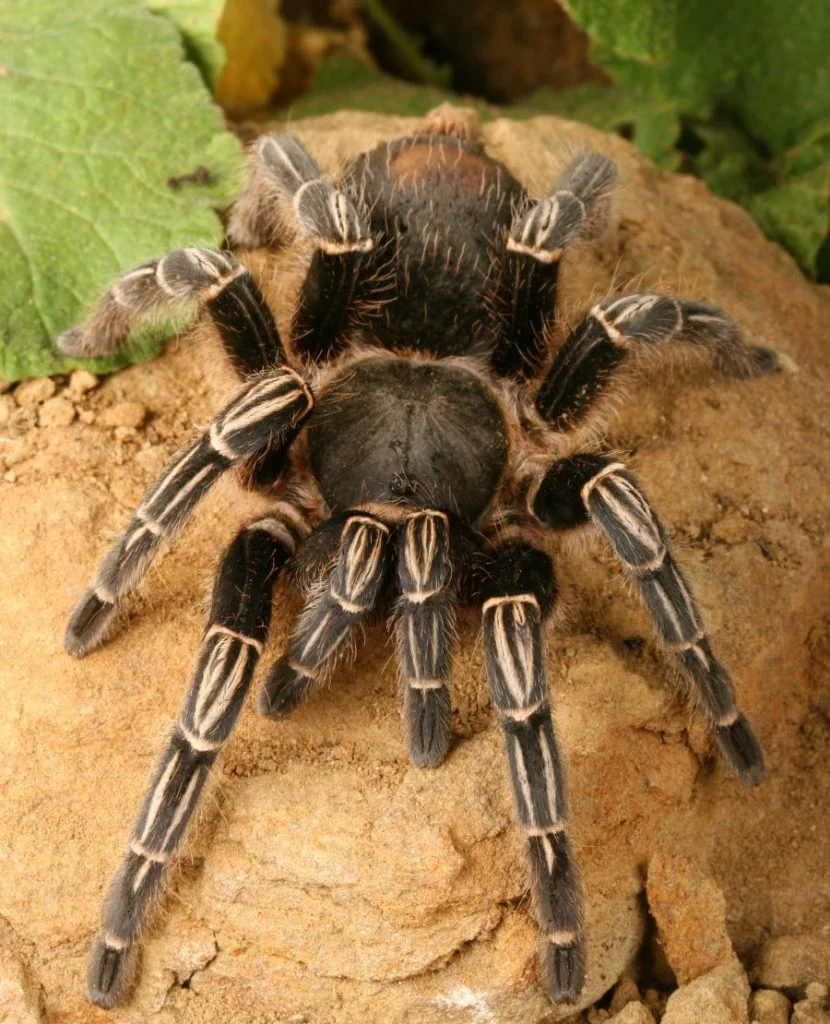
| Scientific name | Ephebopus murinus |
| Other names | Yellow Knee Skeleton |
| Species Type | New world terrestrial |
| Family | Theraposidae (tarantula family) |
| Natural Habitat | Lowland forests |
| Range | Brazil, French Guiana, and some other South American countries |
| Growth Rate | Fast. The maturity age is 4 years |
| Adult Size | 6 inches |
| Lifespan | 15 years (females), 3 to 4 years (males) |
| Enclosure | Needs flour space, 6 inches substrate, needs a water bowl, hide is recommended but not essential |
| Temperature & Humidity | 76°F, 80°F, Humidity is at 80% |
| Diet | Carnivorous |
| Temperament | Not aggressive, but defensive when threatened |
| Experience Level | Intermediate |
| Price | $30 for spiderlings, $75 for males, $100 for females |
Appearance

The skeleton tarantula got its name because of its appearance, and it’s also called the yellow knee skeleton for the same reason.
There are yellow stripes that run along its body, along with a brown stripe in the middle. Together, the stripes form a pattern that resembles a skeleton.
The legs are black and long while the abdomen is small and a light brown, with the carapace being a golden hue.
The skeleton tarantula grows faster than other tarantula species, so from a young age, the skeleton-like pattern starts to appear.
The next physical trait to consider is size. The skeleton tarantula is small compared to many other spiders. The female skeleton tarantula grows to 6 inches while the male comes up short at 4.5 inches.
Behavior
Before getting this tarantula species, you should be comfortable with the idea that it may not always appreciate being touched.
It isn’t aggressive, but the way you handle it can come across as a threat if you’re not careful, and it will defend itself.
While its venom is mild and not fatal (but can be dangerous if allergic), it will surely sting. It is also not friendly to humans.
The skeleton tarantula is shy and tends to even flee from predators rather than fight, which is another reason it isn’t the best choice for pet parents who want a pet they can touch.
You also need some level of experience to take care of the skeleton knee tarantula.
Another key piece of information about this tarantula species is the presence of urticating setae (hairs), which are found on its palps, rather than the abdomen like other new world spiders.
It brushes this hair against the chelicerae and uses it as an offensive tactic on predators. This species of tarantula weaves webs and often lives in shallow burrows that it digs.
Lifespan and Health Issues
The female skeleton tarantula has a lifespan far bigger than the male skeleton tarantula. The male has a life expectancy that falls between 3 and 4 years, while the female lives up to 15 years.
The difference is massive, which means that if you want to own many female species, you’re likely to be with them for a long time.
Proper feeding and good housing keep this spider healthy as long as it lives, but there are some challenges an owner might face. Dehydration is an example.
It might also suffer from parasites or mite infestation. All these are easily treated.
This tarantula may have issues with molting (shedding). You can consult some guides to put you through, such as this one.
Housing: Skeleton Tarantula Terrarium
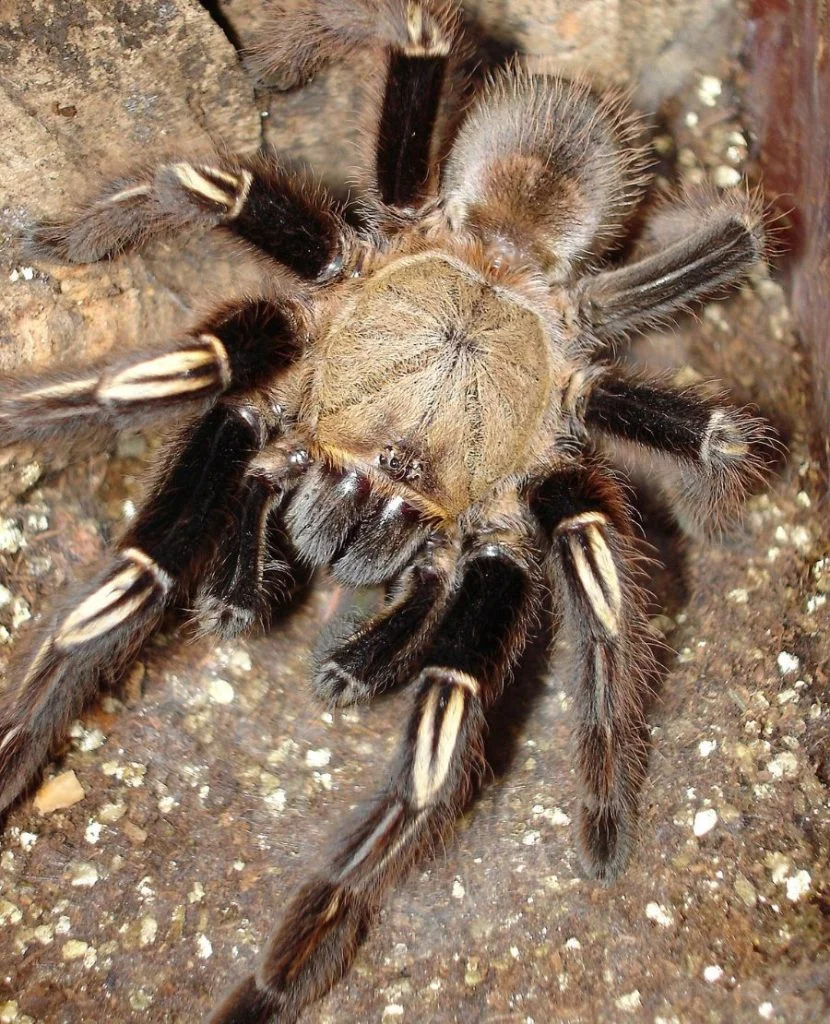
Similar to keeping any form of wildlife in captivity, you should ensure that the skeleton tarantula’s enclosure reflects its natural habitat.
The South American countries that this spider is found in often have humid areas where they thrive in. Thus, the enclosure needs to have the right temperature and humid level.
The temperature shouldn’t be too high or the skeleton tarantula will stay underground more to avoid the heat. It shouldn’t be too low either. The optimum temperature level is anywhere between 76°F to 80°F.
The humidity level should be between 75% to 85%, and the cage shouldn’t be too damp lest mold and fungi grow and stress the spider.
To achieve the humidity level, you can spray a mist of water on the substrate once a week.
The substrate should be at least 6 inches to enable the spider to burrow. It should be from the soil, sedge peat, and coco fiber.
Furnish the enclosure with plants, rocks, and moss. A hide is compulsory and should be adequate.
There should also be a shallow water dish around at all times. Change the water regularly to avoid fungi or algae growing on it.
The tarantula’s enclosure doesn’t need to be complex. It simply needs to be long and have enough volume for burrowing.
Skeleton Tarantula Feeding
The skeleton tarantula’s diet is similar to that of other tarantula species. It consists of insects, but can also include small mammals.
Crickets, roaches, and mealworms are some examples of insects/invertebrates that the skeleton tarantula can eat. As for mammals, they can feed on mice or lizards. Mammals shouldn’t be a regular meal for the spider’s safety, though.
This spider eats a lot because of its rapid growth, so do ensure the meal is always available, as well as snacks and water. The prey should be live, not dead.
Skeleton Tarantula Price
This species is more popular in South America than the North, so it is challenging to find it in the United States.
However, the internet makes it easy, and you can visit some websites that offer the skeleton tarantula for sale.
The good news is that this spider is affordable. You can get the spiderling skeleton tarantula between $25 to $35, the males at $75, and the females at $100. Females cost more because of their longer lifespan.
The affordability of this spider adds to its appeal, and many spider collectors would want one of this exotic yet shy specie in their collection.
Skeleton Tarantula Breeding
The breeding job should only be done if you have a certain level of experience. If you don’t, it’s best to leave the breeding work in the hands of experts.
Breeding a skeleton tarantula comes with its share of challenges, and you may get frustrated by the high number of spiderlings that will result.
The first step experienced breeders take is feeding the female well. A hungry female is less likely to accept the advances of the male.
After the female gets fed, the male is introduced to her enclosure. The process stops if anything goes wrong. If successful, both sexes are separated.
The female creates an egg sac 4 months after breeding. This egg sac houses between 50 to 100 spiderlings.
Related Questions
Do tarantulas like to be petted?
Holding a tarantula puts it in an insecure position which could make it panic and react, biting you in the process
It isn’t a good idea to try and pet a tarantula, and if for any reason you need to do so, handle it with caution.
Are skeleton tarantulas good for beginners?
While some beginners may succeed in taking care of a skeleton tarantula, it usually requires at least an intermediate level of experience. As such, this spider is not advisable for beginners.
How do I know if my tarantula is happy?
While there’s no solid way to detect when a tarantula is happy, check out for the absence of stressful signs.
The signs include trying to escape, moving around frantically, or being aggressive. A calm tarantula tends to be happy.
Wrap Up
Like any other pet endeavor, taking care of a skeleton tarantula is serious business and requires some experience. However, it isn’t complex.
With the right enclosure, feeding, and regular effort, you can take care of this tarantula species.
